Episode 197: HubSpot Popup Form Gem and Dashboard Libraries
Welcome to HubShots Episode 197: HubSpot Popup Form Gem and Dashboard Libraries This episode we chat about a tiny but mighty new HubSpot popup form...
If you're new to HubSpot, we guide you on where to start, how to do it right, and train you to make the most of the platform.
Review your HubSpot portal to uncover issues, spot growth opportunities, and ensure you're maximising its potential.
Unlock business growth with automation and attribution. Implement best practices and execute marketing campaigns.
HubSpot On-Demand
HubSpot Training
HubSpot Websites
HubSpot Campaigns
HubSpot Optimisation
17 min read
XEN Systems 10 July 2020 4:53:38 PM
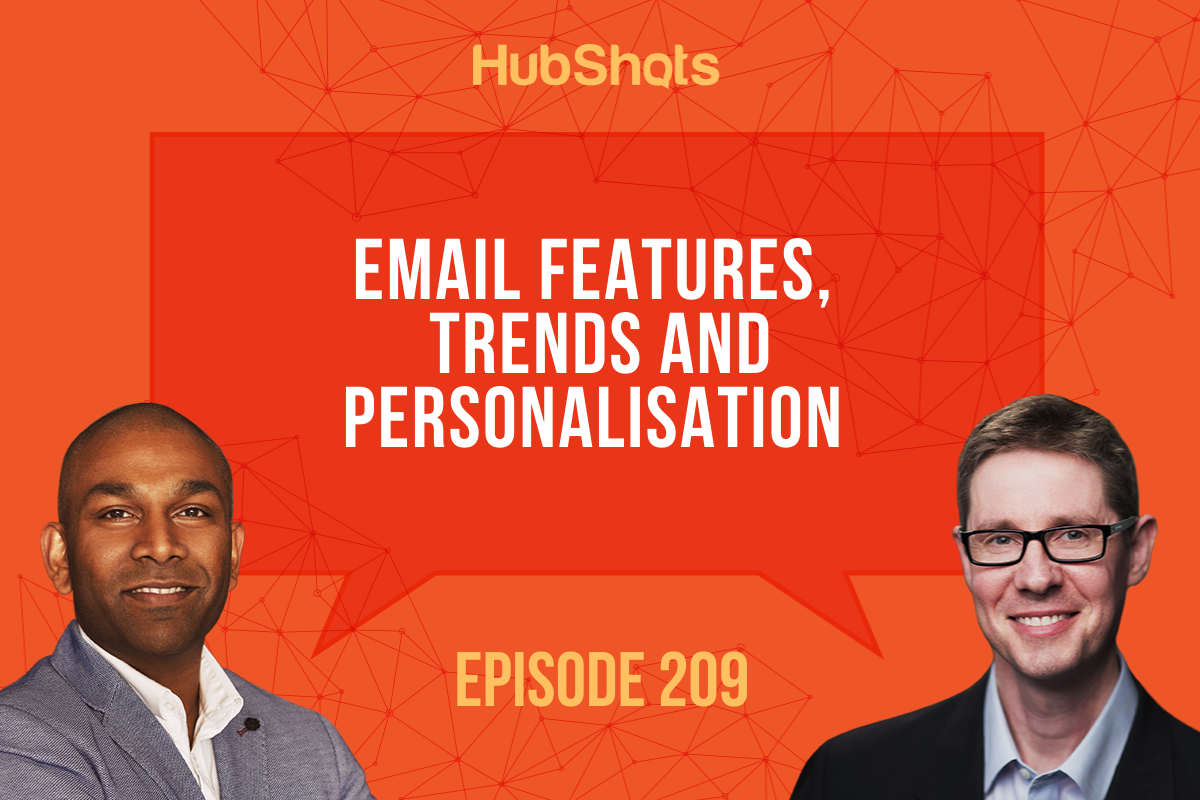
This episode we discuss email features, trends and personalisation along with the importance of testing quickly.
Listen to the episode here: https://soundcloud.com/hubshots/209-email-features-trends-and-personalisation
Welcome to HubShots - APAC's number 1 HubSpot focussed podcast - where we discuss HubSpot tips & tricks, new features, and strategies for growing your marketing results.
HubShots, the podcast for marketing managers and sales professionals who use HubSpot, hosted by Ian Jacob from Search & Be Found and Craig Bailey from XEN Systems.
Recorded: Thursday 02 July 2020 | Published: Friday 10 July 2020
Reuters has released a comprehensive report covering digital news consumption during the coronavirus crisis. A clear trend is the growing trust in reputable news organisations along with a growing distrust in other channels including social media, messaging and YouTube:
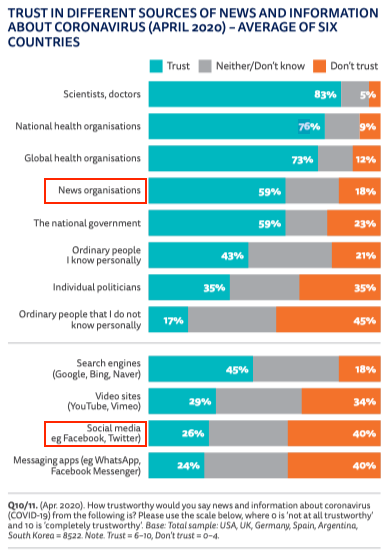
Some interesting behaviours:
Later in the show we dive into how this can impact your email newsletter strategy.
The email editor continues to improve, this time with a simple way to save existing emails as a template.
We’ve had clients asking for this - previously we advised them to create the email and use a naming convention to mark it as a pseudo-template. This update fixes that issue.
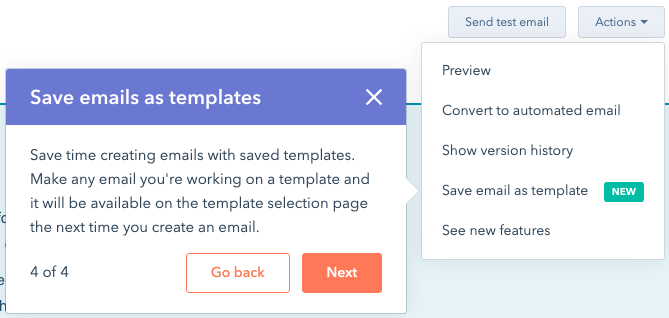
Shoutout to Shane who has been hanging out for this!
Personalising the one email to go from each person on the sales team including their signature.
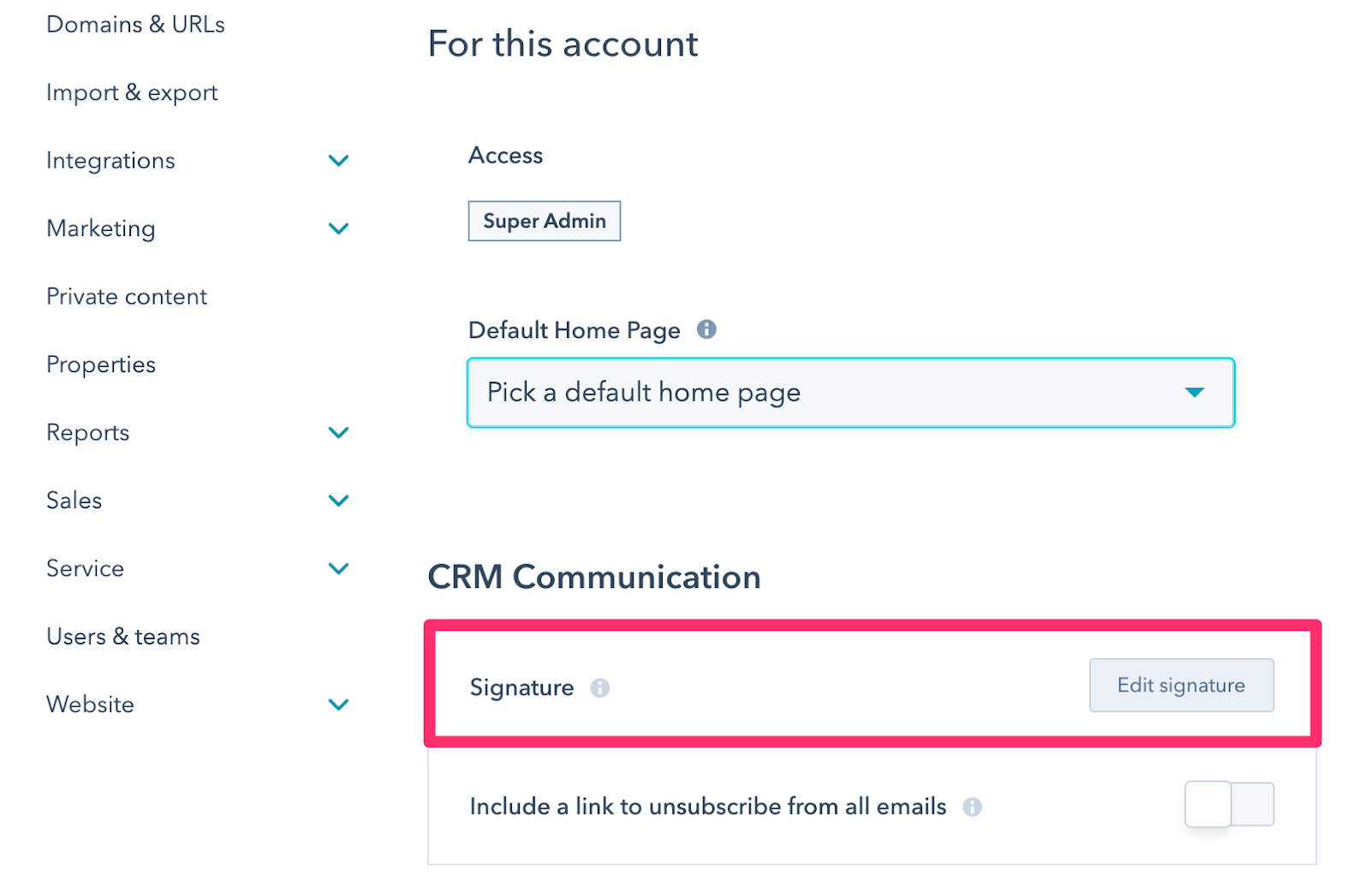
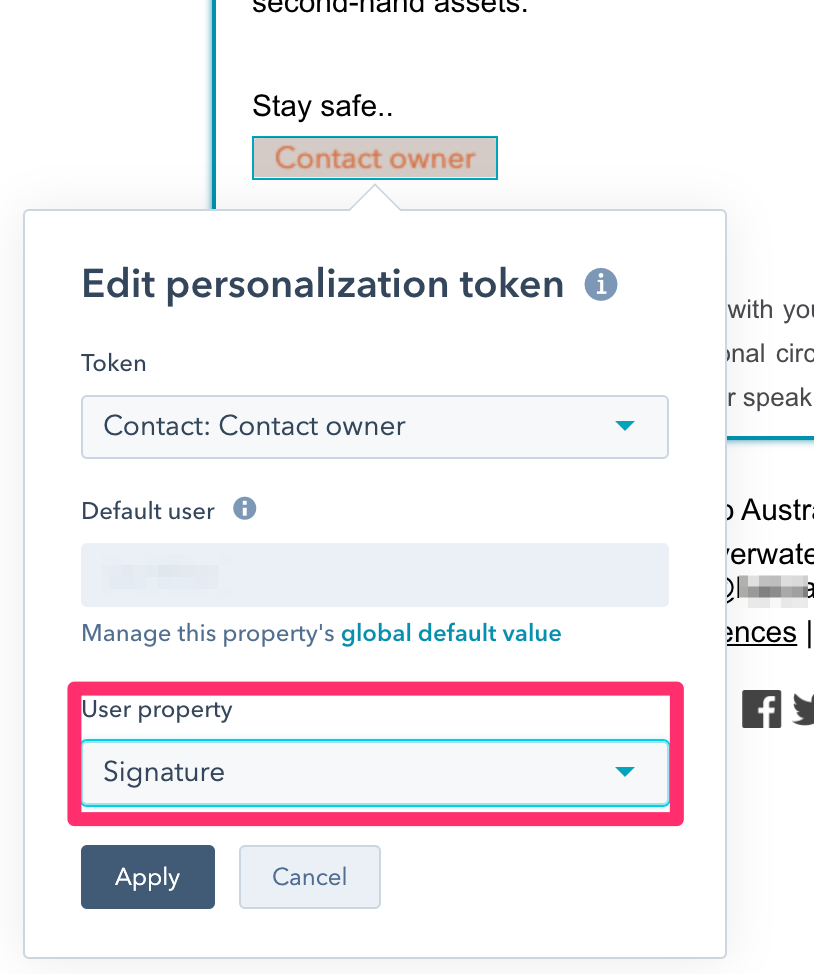
Or using any of the following:
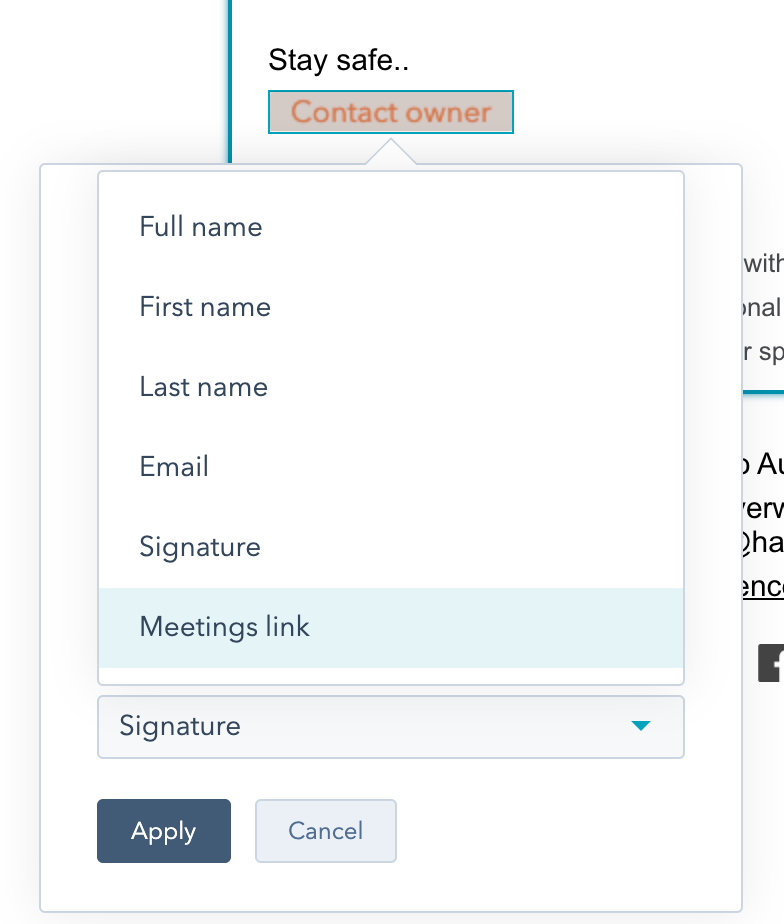
Then make sure the from email and name is set as follows:
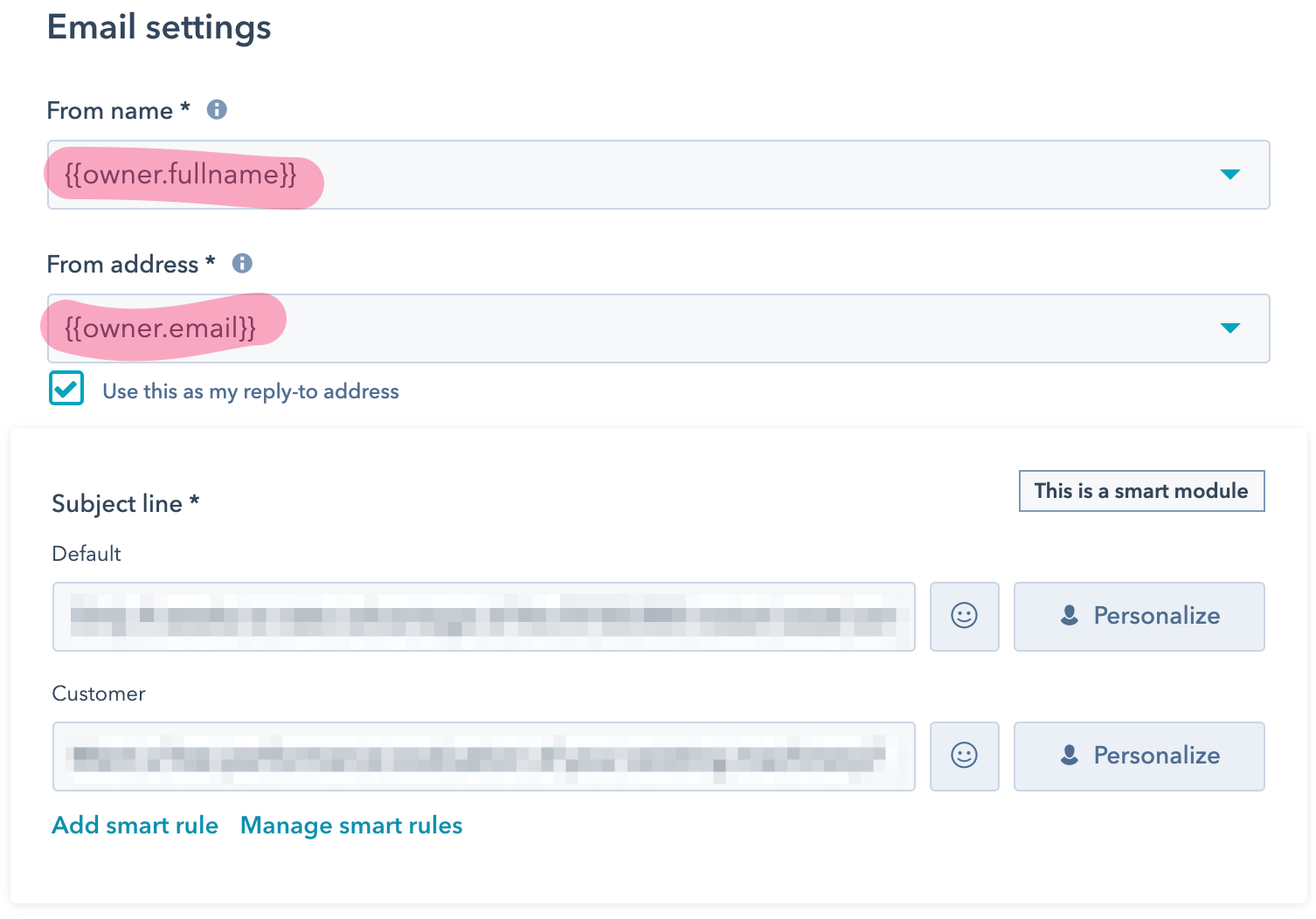
Starting in May one of our clients suddenly started having email deliverability problems - the percentage of soft bounces for an email send were suddenly over 30% - see the example below:
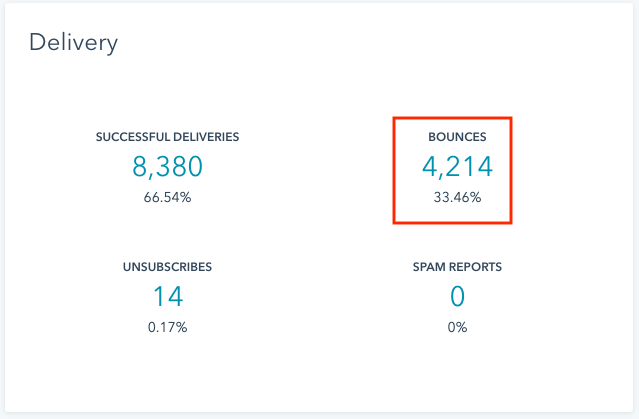
Turns out this was due to their sending domain not being authenticated:
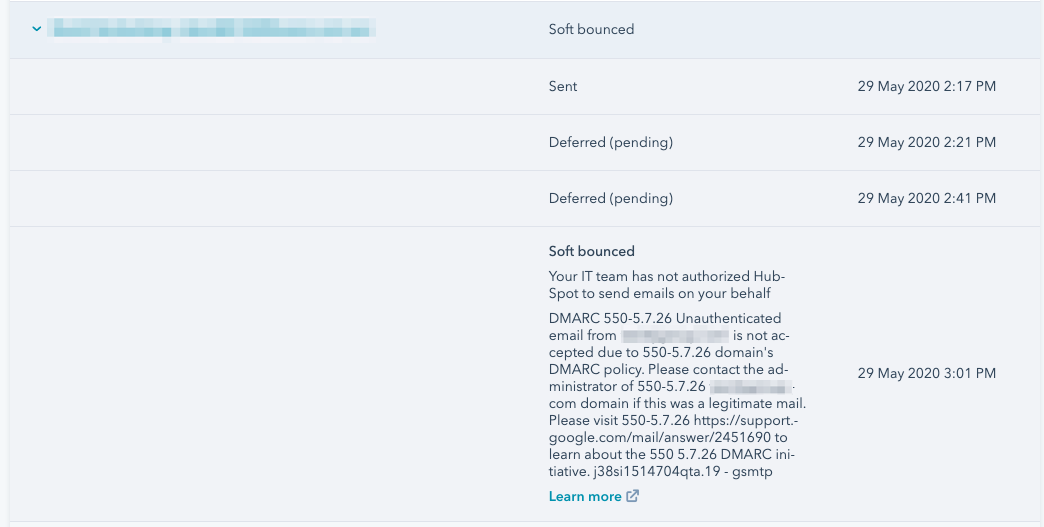
We’re investigating this with HubSpot Support and the customer’s IT team to see if there has been any significant changes in the last two months. We’ve re-started the email sending domain authentication process for this domain again to see if that fixes it.
Action beats perfection.
It can be easy to fall into the trap of thinking you need to build out an entire idea before you put it in market. Recently one client went through the process of building out an entire Shopify store in order to test whether there was the demand for purchasing online - and it never went live because they wanted to get everything in place first. However, they accidentally left it available (unfinished) on one page, and found that people were attempting to purchase. And now they are frantically trying to get it finished - months later.
They would have been better off testing the idea with a simple button to check if anyone was interested in buying. And if that did get a response, then they’d know to put effort into it.
Here is the data that highlighted they need to get this going:
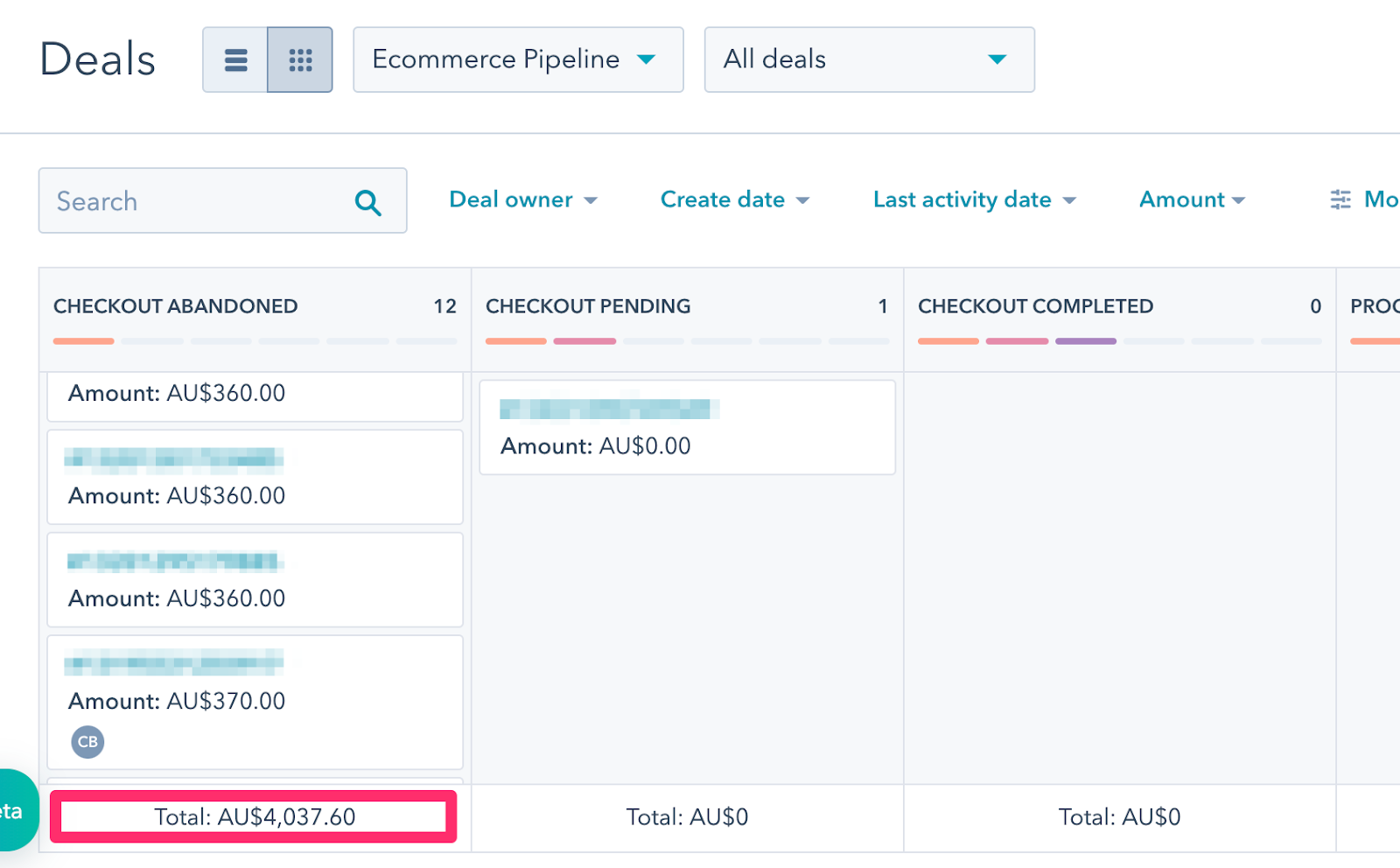
Another example where testing would have been better - another client built out a full Chinese language version of a contact & landing page because they thought there would be demand - but there wasn’t. It would have been quicker to offer a Chinese CTA to test whether there was interest.
As we alluded to at the start of the show, there is now a growing consumption of news (from trusted sources) via email.
Which in turn means there’s even more competition for your inbox attention.
Email (like most content) can be broadly categorised as:
Be clear on what goal each of your specific emails has. The best emails can combine all three, but this is very difficult to do.
Currently, there is a thirst for actionable, valuable news.
An insightful post from Conversion XL covering all the ways click fraud can be impacting your paid ad spend.
Worth checking, but also be mindful that it may not be as big an issue depending on your industry - Google Ads is very good at identifying fraudulent clicks.
"Great leaders absorb uncertainty and pass down clarity"
- JD Sherman (via Brian Halligan tweet)
User Onboarding Examples
https://www.reallygoodux.io/categories/user-onboarding
https://offers.hubspot.com/industry-data-deep-dive
Connect with HubShots here: HubShots YouTube channel - HubShots Spotify channel - HubShots Facebook group - HubShots Twitter - HubShots Instagram - HubShots LinkedIn
Connect with Ian Jacob on LinkedIn and Craig Bailey on LinkedIn
HubShots is produced by Christopher Mottram from Podcastily.
Please rate and leave us some feedback as this helps us improve and reach more marketers.
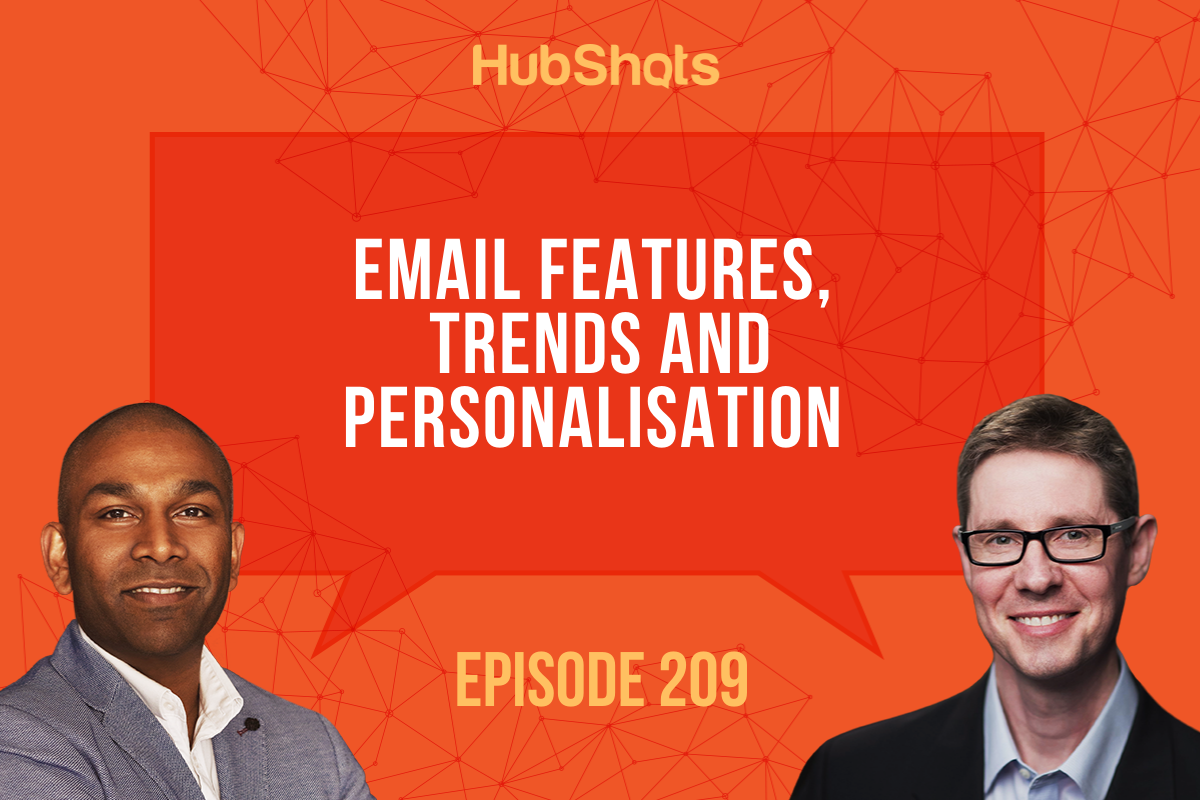
- Hi everyone, welcome to "HubShots" Episode 209. In this episode we discuss email features, trends and personalization, along with the importance of testing quickly, you listen to Asia Pacific's number one HubSpot focus podcast where we discuss HubSpot tips, tricks, features and strategies for growing your sales and marketing and service results. My name is Ian Jacob from Search & Be Found and with me is Craig Bailey from XEN Systems. How are you Craig.
- I'm really well and back for another week. I think some fascinating insights into news coming up in Growth Thought of the Week and particularly how they relate to email. And then of course, we'll dive into improvements in HubSpot email and also some gotchas and tips and tricks.
- Fantastic, so Growth Thought of the Week Craig, "Trust in news sources." This was a report that Reuters have put out, it's quite a comprehensive report, and it's covering digital news consumption in particular during this Coronavirus crisis. One of the things that it highlight is, is there's a growing trust in reputable news organizations. And that's along with a growing distrust in other channels, including social media, messaging and YouTube. We've got a screenshot from the report there. And you can see that news organizations, number four in terms of the trust factor, scientists and doctors are number one, global health organizations, number three, social media, Facebook and Twitter right down the bottom. Why would we be highlighting this at the moment? Well, a few things that come out of this some interesting behaviors, paid new subscriptions have grown. So this is people paying for news. However, it's very skewed just towards the reputable brands, New York Times, Washington Post in particular, been two that have worked well. In Australia, we have the ABC News, which is the most trustworthy by far media brands, worth mentioning to our American listeners the ABC in Australia, is Australian Broadcasting Corporation a lot different to the ABC in America. So they're totally different. The thing that's come out of this, and what's led us to putting this in the Growth Thought of the Week, these reputable news organizations and publications have ramped up their use of email newsletters. And what this report is highlighting is that people are consuming news from reputable brands and that's affecting their behaviors in terms of email consumption. So later on in Shot six or seven in Insight of the Week, we're gonna talk about the types of newsletters that are working and which ones you should be focusing on. So it's coming up after we actually talk about some of the email features that have been coming out in HubSpot.
- Now Craig, I wanted to highlight in this was that scientists and doctors, by far have the most trust and even national health organizations which is really interesting, given what we've, we're going through and what we have been through. So that's a really interesting statistics. There's a little insight into if you're in the medical professional, now's a really good time for you to start doing something around, maybe communicating with people that your audience essentially.
- And we'll cover that later in the show, the type of content you should be actually talking about in your newsletters. The consumption behavior is very clearly talking about educational content. And we'll talk about the types of content that you use in email newsletters.
- And now we're gonna talk about, Marketing Feature of the Week and we're gonna highlight the drag and drop email editor improvements.
- I saw this nice little thing pop up when that was talking about you can now save existing emails as a template. Nice little feature. And why I thought we'd mentioned this is because we've actually had clients asking for this. I think may get used to it in MailChimp and other tools, and they're like, "Oh, okay, so I've created this drag and drop email. "How do I save it as a template? "Where's the save email? "Where's the template?" And they've been like, "Yeah doesn't have it." In fact, what we've advised today is just be like, create it and just name it and use a naming convention and you actually name the email template. We've actually had clients do that. Well now, thankfully, you no longer have to do that, because we've got this new little feature called save emails template, got to screenshot, and there's a nice knowledge base article as well. And I just wanted to give a quick shout out to Shane, you know who you are. Shane, 'cause you've been hanging out for this, it's now there.
- All right, Craig. And now lead onto our HubSpot Sales Feature of the Week and this is about adding personalization and email signatures to emails. And we do this quite regularly on behalf of sales team is sending out say product updates, product information that go directly from the salesperson that those people have a relationship with. So I'm gonna highlight two, three key things that we do and the first one is make it feel like a one on one email. Some including that person's signature in the email, the first thing you need to make sure you do, which not a lot of people do do when they set their account up is to go to profile and preferences and set up your email signature. That's the first thing. Once you've done that, you will then be able to select a personalization token when you create the email. And it's not readily apparent because you might be looking for something to do with signature. But really, what you need to do is for the signature to appear, you've gotta choose the contact token as the contact owner. When you do that, you'll get shown different options and then you use the user property which is signature. Now in there, there are other options as well. So example, a common one is that people might include the meetings link. So that's another way to put this into the email that's going out, if you want them to book a meeting. The third one is in the email settings. The from name and the from address can be personalization tokens from the contact owner. So in the screenshot, you will see it says owner dot full name and owner dot email. And that will pull who the owner is from HubSpot. And if you get these three things, right, you will have great success with your emails, they'd go out on behalf of the sales people in your business. And a bonus here. If you're using a professional enterprise, you can actually add smart rules to your subject lines. And so in this notes, you'll see a screenshot of a default subject line and then a subject lines specifically for customers that are in that lifecycle stage. There you have it.
- They're really good tips and good features and not often used, for example, that smart rules for changing subject lines, I was looking at that and I was wondering, "Oh wow, that's fantastic." And you said to me, "It's been there for ages." I hadn't even realized so I don't think I've ever used it, I've used personalization in email subject lines, but I hadn't used actually smart roles in the subject line. So an excellent tip there.
- All right, Craig onto HubSpot Gotcha of the Week. And this is also to do with email. And it's something that you were showing me in one of your client portals is the sudden increase of soft bounces when sending email.
- Yes, this kinda caught us by surprise. This is a longtime client. We've been sending emails their newsletters for well, years. And all of a sudden in May, that's just the last two months May and June, suddenly getting an extraordinary high number of bounces. And these are soft bounces, got a screenshot from a recent send and 33% of the contacts bounced. And then if we drill, we started drilling into them going, "What's going on?" And you can see again, we've got a screenshot, and there's this DMARC error D-M-A-R-C error that is to do with authorization on the email. So email authentication, not being made, and then for the email getting bounced by the recipient email server. So this has just started happening and we're not exactly sure why. And we are investigating this with HubSpot support and our customers' IT team. So far it doesn't seem as though they had made any changes. It's not like they use, switched email servers or anything like that, that might have affect their domains. What we've done is we've actually gone through and we've restarting the whole email sending the main authentication page with DNS settings or removing them, resetting them, to see if that fixes it, but just a very strange thing. Now, googling it doesn't look like a lot of people had this issue. So I don't think it's a HubSpot issue. But I think it's just to do with the amount of email going around at the moment. I don't know if it's related, in fact, I'm sure it's not related. But did you see recently that Gmail spam filters had a whole outage the other day and there was all this spam, there's all this kinda thing. And then we've seen all these massive, almost like email denial of service attacks going on just in the last couple of weeks, so maybe a whole lot of email recipient, exchanges are clamping down. It's getting tougher. I'm not exactly sure. But the point of this is, "Listeners, "please go and check all those." Checking the bounce rate isn't something that you think to do normally, you look at things like open rate, and you go, "Oh, yeah." But if you're not checking actually how many successful deliveries there are, you might easily miss this. So just a reminder to go through and check those out. And we're actually going through all our customer portals. And now this has become one of our normal processes. Every email that gets sent out, a typical process now we now go and check the bounces. Just because we got lucks on it, we've had effortless and really good delivery for so long. We're just like, "Oh yeah. "Just seemed normal." So just a reminder that things change.
- And listeners, just make sure that soft bounces are generally something like what Craig was talking about is rules changing and authorization changing. Another thing could be someone's mailbox is full. So if you're delivering especially to somebody that has a Hotmail, Gmail or even they've got a limit on their work email inbox, if it's full it'll bounce. So that's the other thing. Here's a tip for hard bounces, you can go and easily create a list from those people that have had bounce and understand why they've had bounce. And what we tend to do is from that list we will create individual contact views for people instead own that contact in sales, to actually follow them up and find out. Generally people have moved on and that email is no longer valid, but it actually gives us the opportunity to update the contact, or in certain government departments or councils that in Australia, they'll have a policy where they'll say, automatic response will go back and say, "This person is no longer here. "And this is the contact of the new person." So this is a really good way to keep your contact database clean and up to date.
- All right, Craig our Marketing Tip of the Week.
- Yes, this is about testing measure, but test and measure quickly. And you were telling me before we started recording this interesting story about one of your clients, how they put off going live with something, because they wanted to make it perfect, basically, but what they should have done it's just quickly tested it. And you've got two examples talk us through them. The first one especially was a fascinating example of opportunity.
- Correct, now here's one customer had an opportunity to actually sell one of their products online. And when everything started recently, we said, "Okay, well, we can quickly set up a shop in Shopify, "and you've only got like a hand, "literally a handful of products that you will sell." We can get that set up, we can then embed it on your HubSpot site, and you can get someone to complete the transaction. Shopify surprisingly has a really good way of doing what they call a simple Buy Button. So setting up the shop, putting the products in and then embedding some code on the page. And everything will take place using the Shopify back-end, and gives a pretty seamless experience, if you wanna do things really quickly. So that's essentially what we set up. They entered, "Oh I wanna see how this looks like "in this view in that view." And so I embedded a few different products in different views on different pages. And I said, "I'll have a look at this "test it out yourselves and figure out, "will this be sufficient to go with." Anyway, then we sell the whole conversation of, "Oh we need to do this. "We need to find these pictures, "we need the shipping policy. "What happens when returns happen?" And now we're overthinking the whole process. Now, weeks have gone by, things have happened. I've taken down some of them, one of them I happen to leave up accidentally. And what happened last week was someone got a notification that they tried to check out. And they've now ended up as a contact in the database. And they essentially go, "We never got notified about this." And this is what triggered the whole conversation. So they found, they tracked back and they go, "Oh," Then they looked, when you connect Shopify and HubSpot, you'll automatically get a E-commerce pipeline that gets created and the stages that a sale would go through. They discovered in the abandoned checkout, in the time since we've had this has been $4,000 worth of sales that have been abandoned. Some of them have from testing. But a lot of them are not, because if you look at the timeline of when things are happening. So first, it was like, "Can you please make sure "this product is off," and the next email two minutes, I was like, "Hang on, we need to get this going "really quickly, because we're missing out on sales." What I'm encouraging people to is even before you even set up Shopify, you could have actually set up a simple call to action to say buy this online and just measure the number of people that click there as a first indicator to then implement a shop. So that was the first example.
- Actually, can I make a few comments on that? Because I really want to ram this idea home from people because the problem here is they wanted to get it perfect. And because that took time I kept putting it off. And it's taking months. And I and I will put that on the back burner 'cause we've got to get it all right. And so they've wasted all of this time. Unfortunately, they got this notification. And now they quickly, "Ah, get it in place," because they have effectively tested it now and confirm there's demand. And I'm guessing it'll take what a couple of days to get this in place and working all those things. So taking months of stuffing around 'cause they wanted to get it right. And what you're saying is they should have just tested it. They could have tested it months ago, put a button "Oh yeah, there is demand, great," and then spend a few days getting it all in line. Ben said they've wasted months, and now there is demand. So your point is action beats perfection, test those ideas quickly. Because on the other hand, say that no one clicked any of those buttons. "Well, okay, there isn't demand. "So don't even waste your time setting up Shopify." But your second example is actually example of that latter case, isn't it where they shouldn't do something.
- Correct, and this is another customer of ours that had somebody on their sales team that is a fluent Chinese speaker and he thought, "Oh, there's a market here "to sell to Chinese people." They've gone to the whole processing, translated a whole page into Chinese about who the business is. They have then created the contact forms. We've done a whole lot of work around, making sure the menus are correct, that the contact in Chinese is correct. We've got the follow ups. Anyway, we do all of that stuff. And then I was about to say, "Hang on, do we know this is gonna work?" Four to six weeks down the track, we have discovered that there has been a zero inquiry from people using this Chinese page. So I would then say is that, I could have solved this problem by putting, maybe putting another CTA in Chinese to figure out do Chinese people actually want to A, use their product and B, inquiring this manner without having to actually do the whole process of all the translation and spending all that time doing it. Another example of saving yourself heartache. All right Craig, Insight of the Week, email behavior trends.
- Alright, so we flagged this at the start of the show. And this comes from the Reuters report that we were talking about, and the fact that news organizations, accelerating the use of email newsletters, and you would know if you're a subscriber to any of these, I'm a subscriber to The Washington Post, for example, you can go in and get choose to get newsletters daily, weekly, all kinds of things. That's been really worth it for those brands. But here's the thing, we often talk about content being one of three types, it can be educational, that's utility, it can be entertaining. So it's more of a leisure piece. And then it's promotional, there's a sales aspect. And so whether it's content, whether that's email, whether it's site content, blog pages, even videos, you do all those kind of things. It's normally one of those three, and if you're particularly talented, you can wave all three into an email and so you've probably experienced this, you have an email, it is very informative, gives you information you feel that's valuable. There's a bit of humor and say some entertainment as well. And then there's a call to action to maybe buy something. When it's done well, it can be very effective. However, based on the current crisis we've been through, and this is what the writers literally are showing the pushed educational content and news content, high value news content has increased because it runs 24/7, just looking for more news on COVID, it's affecting behaviors that seeping into behaviors with other topics and this is business emails, products that you, people want trusted educational contents or information. So what we're talking with our clients and perhaps listeners, this will apply to you, your mileage may vary depending on your industry and of course, a whole bunch of other factors but if you've got an email newsletter, and perhaps in the past you used to just have a curation pace and slap together a few links and not really put high value that's not gonna get the cut through because while news letters with educational content have increased, that's been at the expense of the what we'll call the lazier newsletter. So we're really looking to make this high value. And here's the way to test, If you're talking about a product, say for example, as if we were talking about HubSpot, if I was to send out a newsletter that just regurgitated news links that you could get from the product blog, or something like that, it's probably not gonna be high value. But if we put our own spin on it, and add our own insights to it, so it's still high value, and is informative, has our voice, the real test is could they get that content anywhere else? If they could, then yours isn't unique. So think about that, particularly around educational content, and how you can provide high value especially during these times to your audience.
- Now, Craig, one of the email news that we love that probably encompasses all of this is Morning Brew. And I think listeners you've heard us talk about this a lot of times.
- Morning Brew and Marketing Brew, do you get the Marketing Brew?
- I do, and I even get the Retail Brew? Did you hear that?
- Oh, no, I didn't know there was a Retail Brew. I have to check that one out.
- Yeah, that's really good. I actually enjoy reading that, that's not as frequent but a good read, nonetheless.
- You know what we should do next time, I remember a couple years ago, we talked about the newsletters that we did subscribe to. We should put that list up again, because there's a few I do, I subscribe to and pay for it. There's actually paid newsletters. I'm actually very happy to pay for good quality content. I just don't have time for all the noise that people have to insert in order to sustain, I guess the time that they do so. I have a few but there SEO Marketing ones I happily pay because they give me value and they save me time.
- All right, Craig, we have our Resource of the Week and this is probably really interesting to people that are doing paid advertising. And an insightful post on conversion Excel, again, we speak about quite a lot. And is click fraud, devouring your ad budget? So covering ways that click fraud can be impacting your paid ad spend. And it's worth checking out and be mindful that this may be happening in your industry. And also be understanding that Google is very good at identifying fraudulent clicks.
- I think this is right. It's a really good article and opened my eyes. And then I went looking for tools. And of course, there's so many tools on the market these days that will help you avoid click fraud, and they all work differently. And so it was quite insightful for me to find out how they do all these things. But yeah, then we're chatting on some of the members groups I'm on. And some of the experts in Google Ads and former Google Ads engineers and they say fraudulent clicks is one of the things they spent a lot of time trying to crack down on. And we've had this in some accounts where we look in, 'cause there's actually a column that Google Ads will show you where they, what do they call it? I don't think it's called fraudulent clicks, it's like refunded clicks or something like that.
- Correct, you actually see a refund on your bill.
- Yeah,
- Based on that.
- Where they highlight all the clicks that they found that were fraudulent and they yeah, they don't charge you for them. So that's good.
- All right, on to our Quote of the Week, Craig. It's a great friend from JD Sherman.
- Yeah, Brian Halligan tweeted this, and here's the quote, "Great leaders absorb uncertainty and pass down clarity." How good is that? That is leadership right there, absorb uncertainty and pass down clarity. Thanks, JD
- All right. We've got a few Bonus Links in the show. So we encourage you to check it out. One is about industry deep dive and it's a HubSpot report. And the other one is, from a cycle really good UX about user onboarding. Listeners again, thank you for listening. Please connect with us on LinkedIn and leave a note saying you listen to this show, and connect with us on the socials. And we know, you can subscribe and have this delivered to your inbox every week. So go to hubshots.com and subscribe and you'll be notified every time our episode goes live. Well Craig, until next time.
- Catch you later, Ian.
- [Narrator] Hey there thanks for listening to this episode of HubShots. For shot notes and the latest HubSpot news and tips, please visit us at hubshots.com.
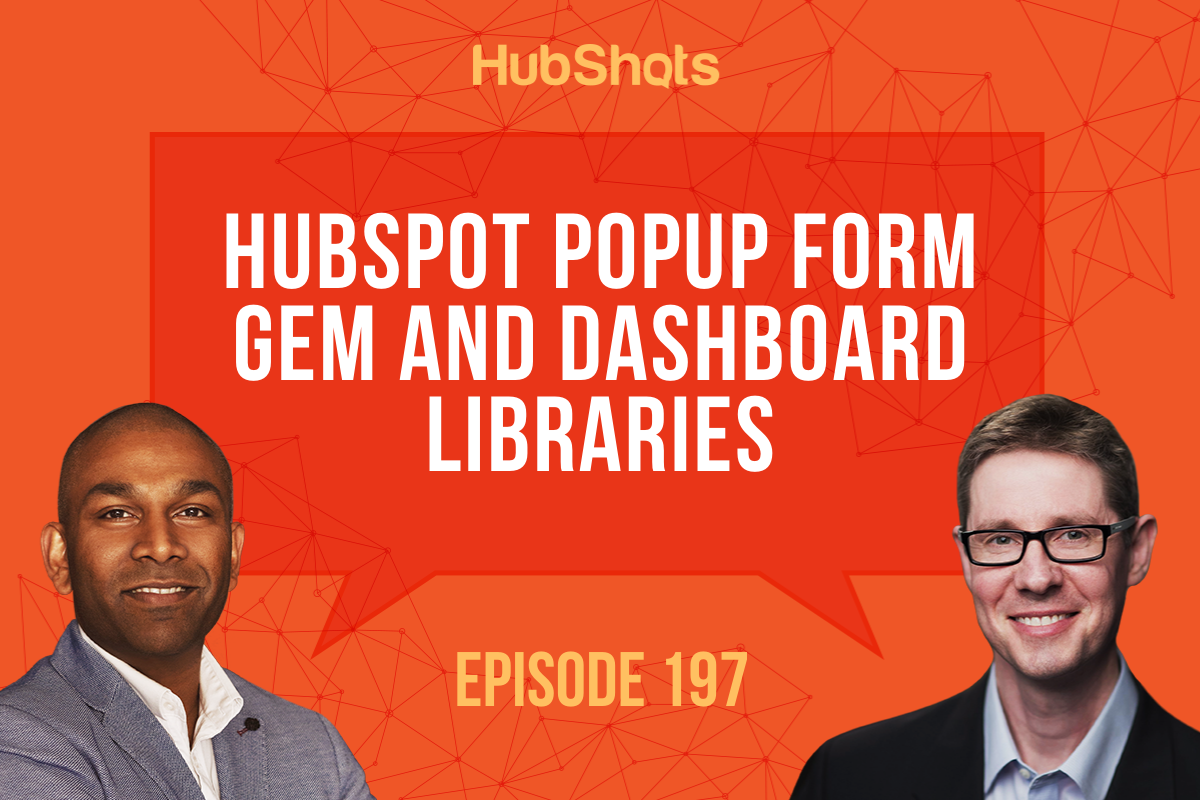
Welcome to HubShots Episode 197: HubSpot Popup Form Gem and Dashboard Libraries This episode we chat about a tiny but mighty new HubSpot popup form...
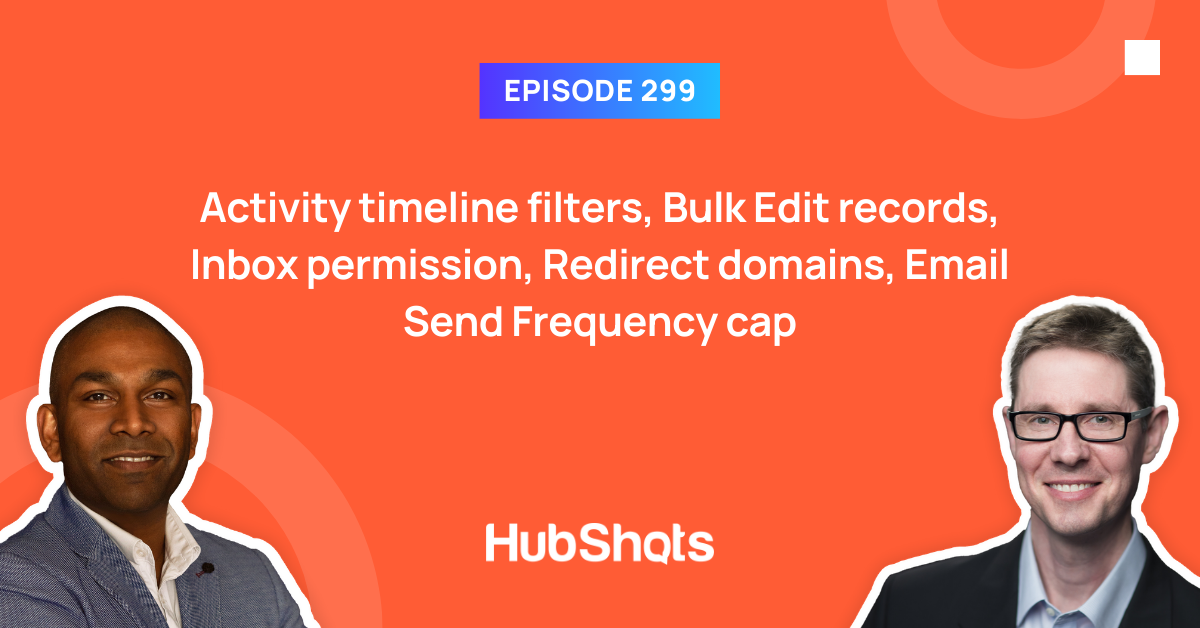
Welcome to HubShots Episode 299: Activity timeline filters, Bulk Edit records, Inbox permission, Redirect domains, Email Send Frequency cap
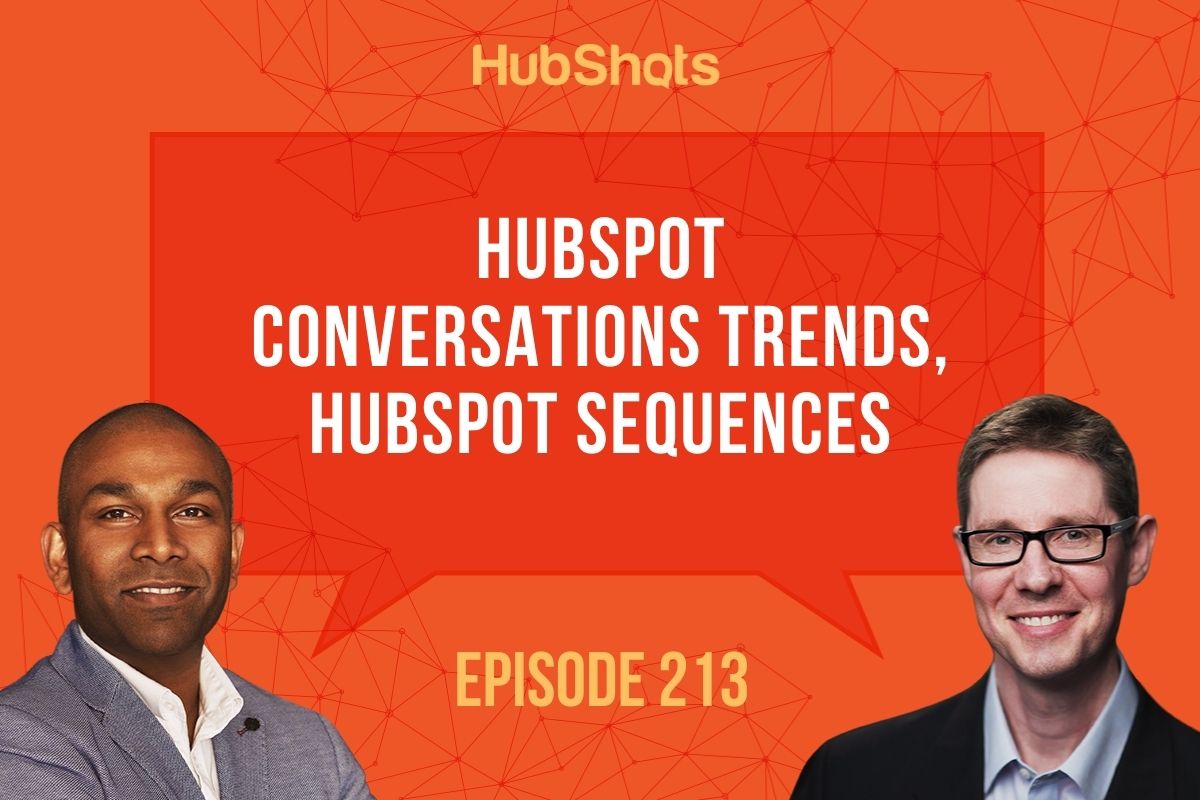
Welcome to HubShots Episode 213: HubSpot Conversations Trends, HubSpot Sequences This episode we discuss Conversations trends, HubSpot Email...